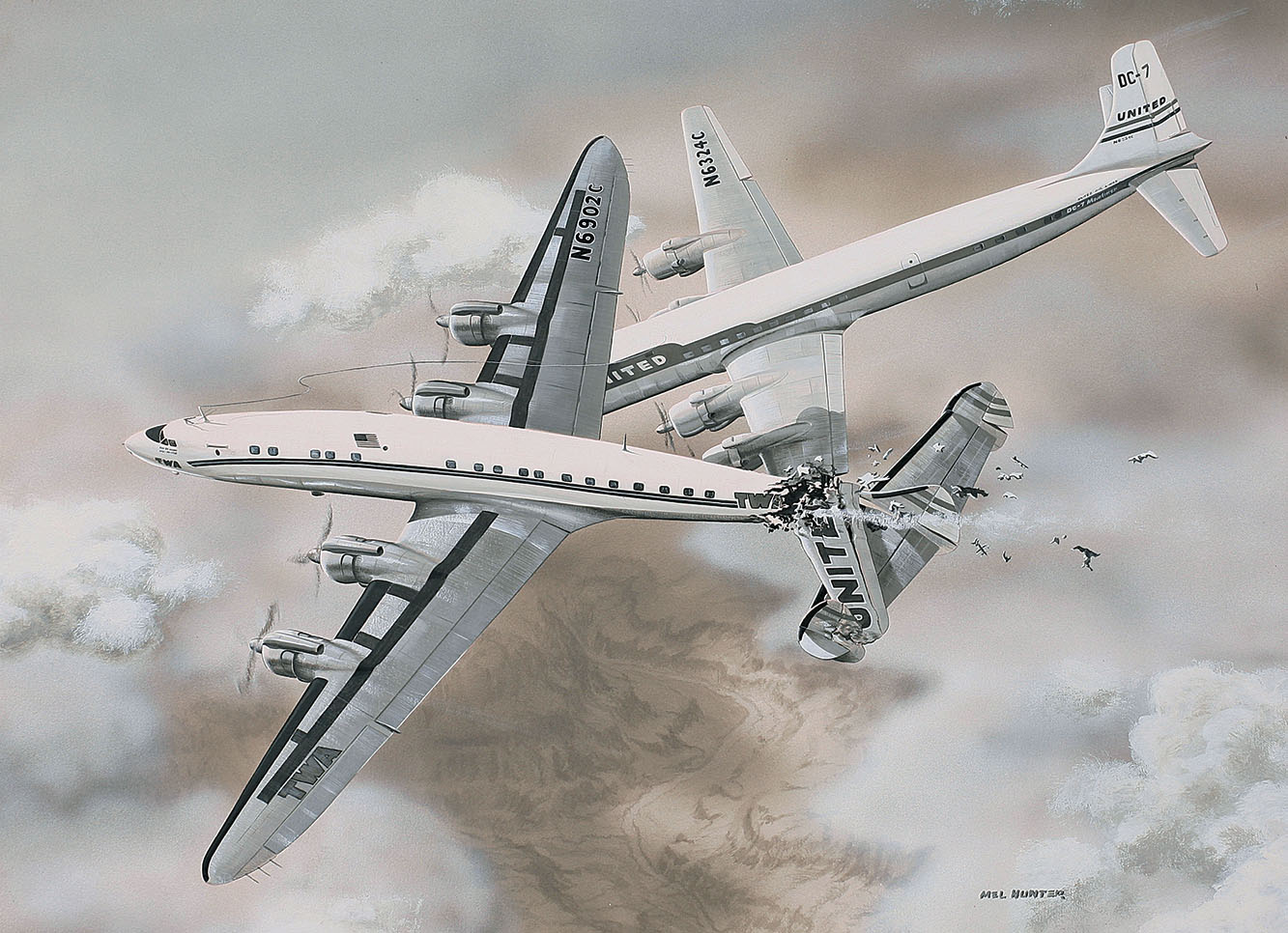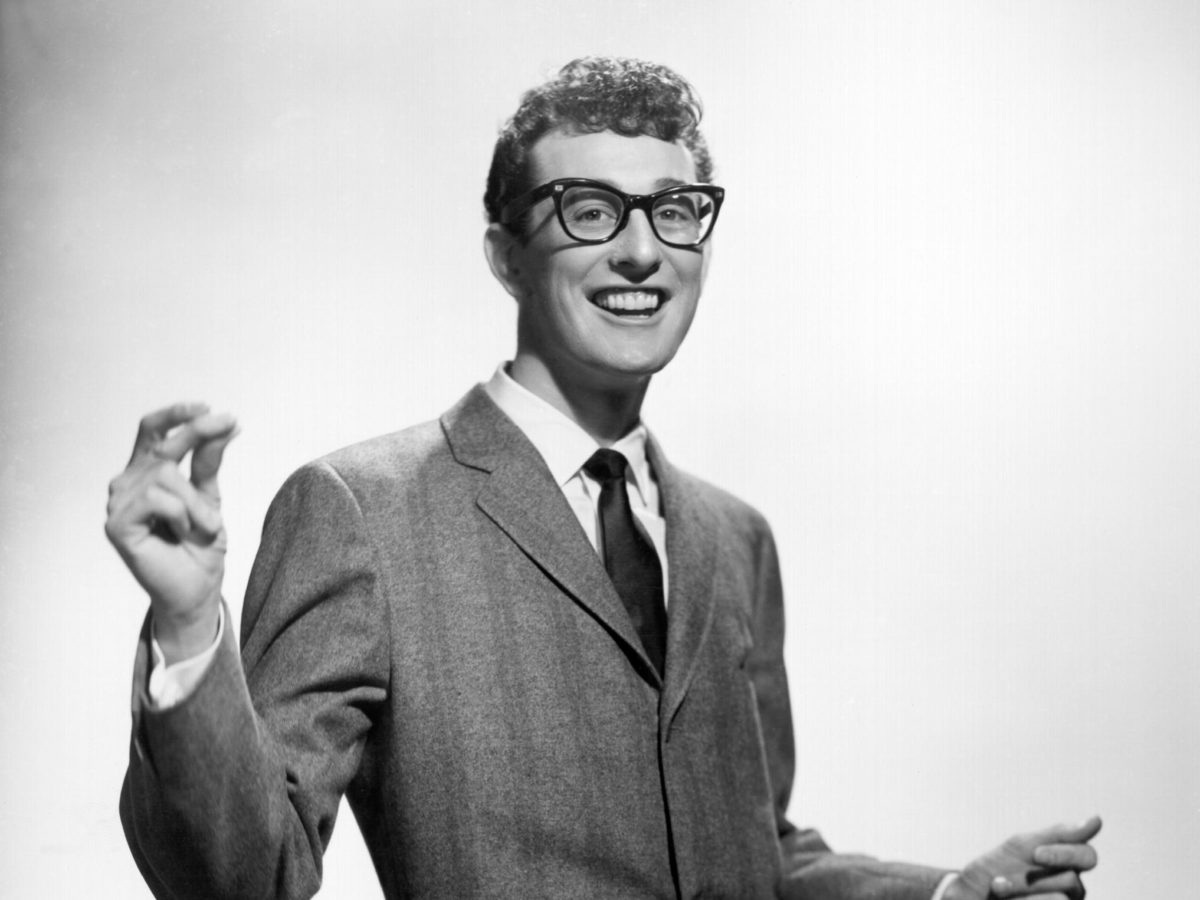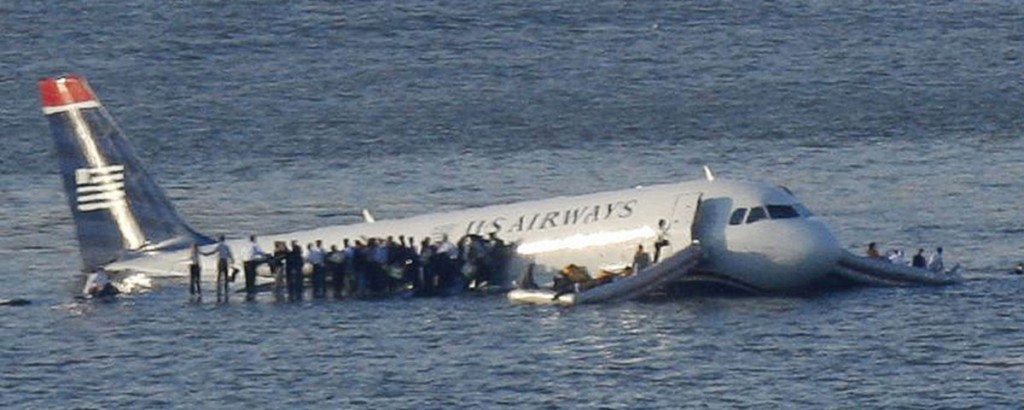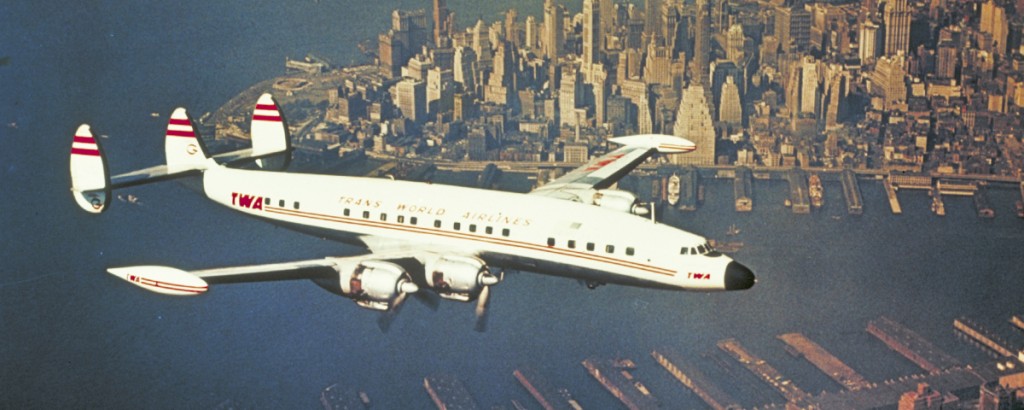The collision of two airliners above the Grand Canyon in 1956—at the time the deadliest American air accident, resulting in the loss of 128 passengers and crew—had a profound effect on the aviation industry as well as the United States as a whole. In the aftermath of that high-profile accident, many came to believe the system used to control the nation’s skies was flawed and inadequate. As a result, the U.S. invested nearly $250 million in modernizing its air traffic control system, and ultimately established the Federal Aviation Administration to regulate and oversee all aspects of civil aviation.
Thanks to the Civil Aeronautics Board’s accident investigation report, we can piece together how and why TWA Flight 2, a Lockheed Super Constellation, and United Airlines Flight 718, a Douglas DC-7, collided on the morning of June 30, 1956, then crashed deep inside the canyon, a little over a mile apart. The short answer is that both pilots were avoiding a thundercloud—while also trying to give their passengers a good look at one of the most scenic spots on earth. But the collision pointed to a larger problem: outdated equipment coupled with insufficient and piecemeal oversight.
A View to Die For
The thunderhead over the Grand Canyon was already massive by 10:30 on the morning of June 30, with its top reaching above 25,000 feet. Captain Jack S. Gandy, in command of TWA Flight 2, an L-1049A Super Constellation en route from Los Angeles to Kansas City, banked left around the storm, ensuring his 70 passengers and crew would have a good view of the panorama unfolding below them.
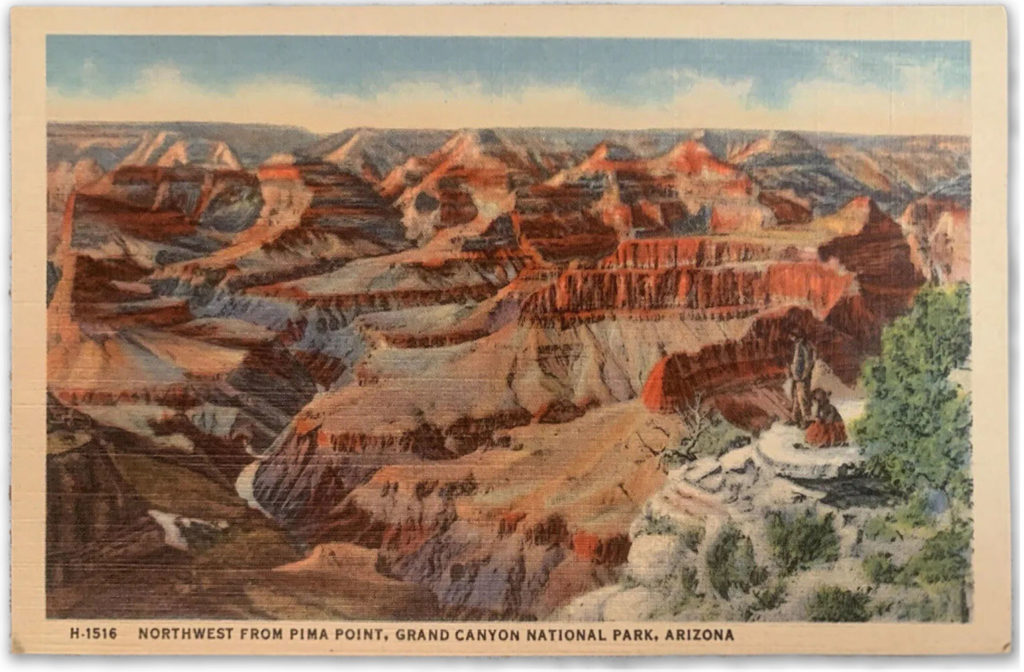
Meanwhile Captain Robert F. Shirley, piloting United Airlines Flight 718, a DC-7 with 58 passengers and crew aboard bound from Los Angeles to Chicago, was also dodging the rainstorm. Shirley headed around the storm cloud’s right flank.
The Constellation cleared the thunderhead and rolled level as Captain Gandy was eying more rain towers to the northeast. Seconds later Captain Shirley also cleared the storm and swung level—and in that instant caught sight of the Connie’s red TWA markings outside his left cockpit window. Shirley tried desperately to avoid the other airliner, but the controls didn’t respond quickly enough to enable him to slew his DC-7, barreling along at nearly 300 knots, clear of the Constellation.
The DC-7’s left wingtip hit the Connie’s tri-tail, slicing through the rear of its fuselage just forward of the tail. As the DC-7 roared past, the propeller of its left outboard engine chopped a tattoo of holes along the Connie’s fuselage. Then the two planes hurtled apart, each headed on a deadly trajectory.
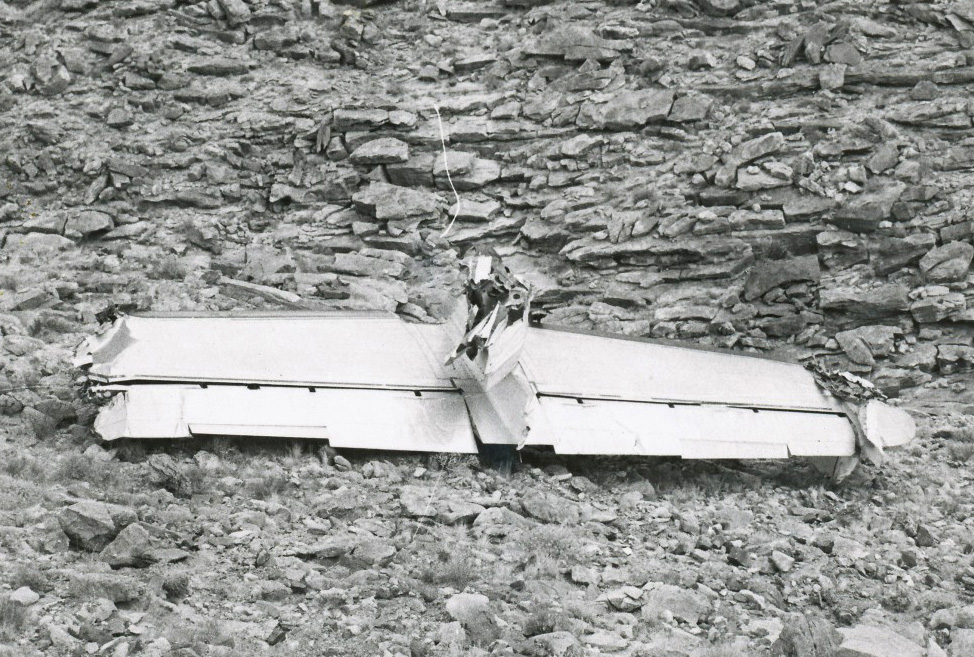
The now-tailless Connie pitched forward, plunging into the canyon 21,000 feet below. The DC-7, its left wingtip shredded, entered into a steep left turn, passing through a scattered cloud deck at 15,000 feet and diving toward the gorge. Shirley wrestled with the controls as his first officer, Robert W. Harms, grabbed the radio microphone and sent the only post-collision message heard from either aircraft: “Salt Lake, United 718…ah…we’re going in.”
Later that morning, Palen Hudgin, owner of the Grand Canyon Airways sightseeing operation, was aloft in his Piper Tri-Pacer when he noted smoke rising from the eastern end of the canyon, where the Little Colorado River flowed into the Colorado. Dismissing it as likely coming from a brush fire started by lightning, he banked to the west and continued on his way. While he was eating dinner that evening, however, Hudgin found out that aircraft were missing in the area. Remembering the smoke he had seen, he flew with his brother to the Little Colorado, where they spotted the Connie’s tail assembly far below them.
A Fatal Delay
Los Angeles International Airport bustled with activity when the TWA flight departed that morning. Thanks to modern airliners with transcontinental range like the Constellation, Americans were flying more than ever before. In the five years from 1950 until mid-decade, revenue passenger miles (one passenger traveling one mile) increased from 8 billion to nearly 20 billion.
Captain Gandy, his first officer James Ritner and flight engineer Forrest Breyfogle were scheduled to depart for Kansas City at 8:30 in Star of the Seine, designated as Flight 2. But last-minute engine work delayed them at the ramp that morning. Gandy, 41, had been a Navy pilot in World War II, while 31-year-old Ritner had racked up 7,000 hours flying B-17s during the conflict. Both men were accustomed to the “hurry up and wait” of flight operations.
The Super Constellation was powered by four Wright R-3350-DA3 turbo compound radial engines, each developing 3,250 hp. The 18-cylinder supercharged power plants represented the height of piston engine development. The R-3350s were complex and notoriously finicky, prone to act up and cause delays or diverted flights.
Once the engine work was completed, the ground crew buttoned up the cowling and gave Gandy the all-clear. The three men in the cockpit attended to the engine start check list: “landing gear handle down,” “parking brake set,” “control boost,” “crossfeed valves closed,” “generators off,” “blowers low.” After Gandy made another visual sweep of the ramp, engine no. 3 smoked and roared to life, followed by no. 4, then nos. 1 and 2. Four 15-foot Hamilton Standard props tilled the air as the Connie taxied for takeoff.
Lining up on runway 25, Gandy went through the usual checklist, then was cleared for takeoff. The Connie gathered speed and lifted off, airborne at 9:01—31 minutes late, a delay that would prove fatal.
Fateful Flight Plans
Just three minutes after the TWA flight took off, United Airlines Flight 718, nonstop to Chicago, lifted clear of LAX’s runway 25L. Compared to the Connie’s curved lines, the DC-7, Mainliner Vancouver, was all straight-line power. Designed to compete with TWA’s long-range Constellations, the DC-7 was faster and could carry more passengers. In one respect, however, both airliners were the same: They were powered by R-3350s. Passengers on both could amuse themselves by watching the flames that spewed from the Wrights’ exhaust nozzles.
Mainliner Vancouver’s commander, Captain Shirley, 48, had been flying for United for 19 years, logging 16,492 hours. His copilot, Robert Harms, 36, had 4,540 hours, but only 230 hours in DC-7s. Their flight engineer was Girardo Fiore, 39, who had started as a mechanic and worked his way up to a seat in the cockpit.
Once airborne, the TWA Constellation contacted the Los Angeles tower radar departure controller. Flight 2 was vectored through the overcast blanketing the L.A. area. After reporting they were on top of the overcast at 2,400 feet, Flight 2 then switched to the Los Angeles Air Route Traffic Control Center (L.A. Center) frequency for route clearance.
Gandy and Ritner had filed an instrument flight rules (IFR) flight plan that would take the Connie to the Civil Aeronautics Administration (CAA) communications station at Daggett, Calif. From Daggett, Flight 2 had filed to fly direct to the station at Trinidad, Colo.; to Dodge City, Kan.; and then on to the Kansas City airport.
The controller at the L.A. Center told Flight 2 to climb to 19,000 feet in visual flight rules (VFR) conditions. TWA 2 then asked for a small change in its flight plan to Daggett, a request that was approved by the L.A. Center controller.
Meanwhile, United Flight 718 followed a similar procedure to get on top of the L.A. overcast. Though also headed east across the Mojave Desert and then northeast to Chicago, Flight 718 had filed a different IFR flight plan. It called for Mainliner Vancouver to proceed to the Palm Springs Intersection, then direct to the CAA communications station at Needles, Calif.; Painted Desert, Ariz.; Durango, Colo.; Pueblo, Colo.; St. Joseph, Mo.; and Midway Airport.
In the mid-1950s, once an airliner was en route its crew communicated with its own company radio stations. The company radio would report airplane positions to CAA flight advisory stations and air route traffic control centers. Flight 718 reported at 9:58 that it was over Needles at 21,000 feet, and estimated it would cross the Painted Desert line of position in Arizona at 10:31. By 10 that morning the fragmented system of en route traffic control seemed to be working to safeguard both flights. In reality, that system had already started to break down.
“1,000 on Top”
At 9:21 TWA Flight 2 had reported via its company radio link that it was approaching the station at Daggett. Gandy and Ritner had been assigned an altitude of 19,000 feet by L.A. Center, but now Flight 2 called its company radio operator to phone L.A. Center and request approval to climb to 21,000 feet. This kind of communications routing was standard procedure. Company radio operators telephoned info to CAA centers, got instructions and then radioed them to their aircraft. L.A. Center advised Flight 2 that it was unable to approve the requested altitude because of traffic—that traffic being United 718, which at 9:21 was climbing to its approved IFR altitude of 21,000 feet.
Why Gandy wanted to climb to 21,000 is unknown. Perhaps weather briefings had tipped the Flight 2 crew to the growing rain clouds ahead, and Gandy wanted to get above them if he could. Having flown the route 177 times, he certainly knew what type of weather to expect.
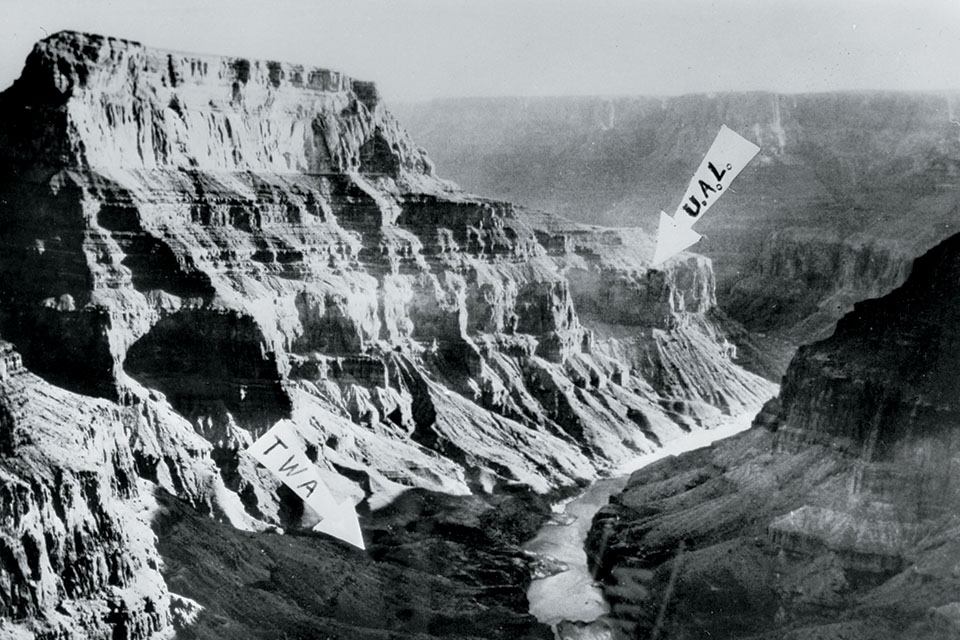
After Gandy put in his request for 21,000 feet, the radio operator relayed it by phone to L.A. and waited for a response. But before getting a response, Gandy called Daggett again and made another request, telling the TWA radioman that if his request for 21,000 was not approved, he wanted a VFR clearance of “1,000 on top”—which would require Flight 2 to stay 1,000 feet above any clouds and not fly through them. Under this VFR clearance, Gandy would be required to “see and be seen.” This meant responsibility for preventing a collision rested with Gandy and Ritner. But the most important aspect of 1,000 on top was that as far as air traffic control was concerned, it allowed Gandy to fly at whatever altitude he wished, right up to the Connie’s service ceiling of 24,000 feet.
Before making a decision on the 21,000-foot clearance for TWA Flight 2, L.A. Center called Salt Lake Center: “TWA 2 is requesting two one thousand, how does it look? I see he is Daggett direct Trinidad. I see you have United 718 crossing his altitude—in his way at two one thousand.” Salt Lake Center’s response was: “Yes, their courses cross and they are right together.” With the danger of a collision now readily apparent, L.A. Center called the TWA radio operator and said, “Advisory, TWA 2, unable [to] approve two one thousand.” Before L.A. Center finished, the TWA radioman interrupted, “Just a minute. I think he wants a thousand on top.” L.A. Center then granted that request: “ATC clears TWA 2, maintain at least one thousand on top. Advise TWA 2 his traffic is United 718, direct Durango, estimated Needles at 0957.” The TWA radio operator relayed this information to Captain Gandy, including United 718’s altitude of 21,000 feet. The radioman later testified that he had recognized Gandy’s voice acknowledging the info on United 718 as “traffic received.”
At 9:59 Flight 2 called company radio at Las Vegas, reporting that it had passed Lake Mohave at 0955, it was 1,000 on top at 21,000 feet and estimated it would reach the Winslow VHF omnidirectional range (VOR) station at 10:31. That was the last broadcast from either aircraft until 10:31, when Flight 718 transmitted, “…we’re going in.”
Both aircraft were due to report in when they reached the Painted Desert line of position east of the Grand Canyon. When 10:30 came and went with no reports, CAA radio stations and the company ground stations attempted to contact the planes. The CAA officially declared them missing at 11:51 and issued an alert.
No Survivors
By the time the Hudgin brothers arrived over the Little Colorado River that evening, the smoke Palen had seen earlier was gone. But on the flanks of Temple Butte on the west side of the Colorado River, in the deep twilight shadows, the brothers could just make out the Constellation’s tail assembly. They reported their find, ending the mystery of Flight 2’s whereabouts.
The following day, July 1, Palen Hudgin returned to the area and spotted a field of burned wreckage that marked Star of the Seine’s demise in a draw on the northeast slope of Temple Butte. He also saw the remains of Mainliner Vancouver high on Chuar Butte, where the airliner had smacked into the cliff’s vertical face at 4,500 feet, only 10 feet from the top. He saw no signs of survivors, only a blackened scar on the rock.
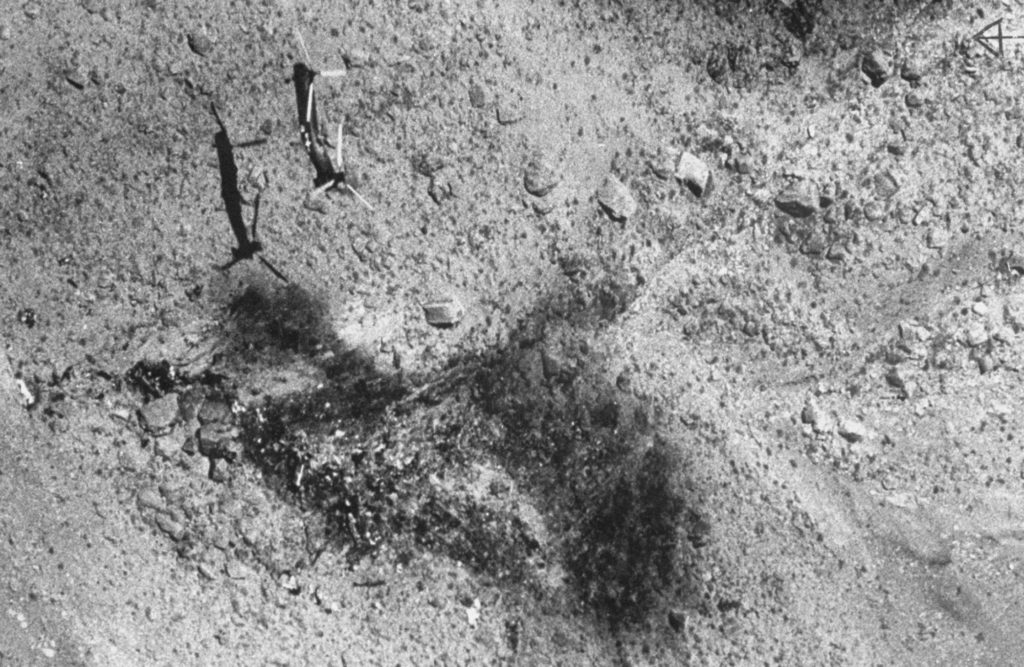
Later that day, a U.S. Army search-and-rescue helicopter landed at the Constellation crash site. With the possibility of survivors put to rest, one question was paramount: Had the two planes collided? From the wreckage’s small footprint, it was clear the Connie had hit the ground at a steep angle, and had been inverted on impact. Due to the high crash speed and an intense ground fire, much of the aircraft had been destroyed, but Civil Aeronautics Board (CAB) investigators were able to recover significant pieces of the plane, including the severed tail assembly.
They also found telltale wreckage from the DC-7. The precipitous crash site near the top of Chuar Butte was hazardous for investigators. Making the job even more difficult, major components had fallen into a deep chimney and also onto sheer ledges below the impact site. A team of Swiss mountaineers flown in by SwissAir helped United personnel recover key wreckage.
At both sites teams undertook the gruesome task of recovering what they could of the human remains. An FBI forensic team could identify only three of the 70 passengers and crew members on the TWA airliner, while half of those aboard the United flight were identified.
Piecing Together a Tragedy
When CAB investigators assembled the key pieces of wreckage in a warehouse in Flagstaff, it became clear how the two planes had collided. But for the American flying public the results of that investigation raised an important question: How had the U.S. air traffic control system allowed two modern airliners to collide? The issues involved were reflected in the April 1957 CAB accident report. Four pages described the accident scene and the physical evidence used to determine the nature of the collision, and another 19 pages detailed the complex mix of airline rules, air traffic control regulations and weather factors that had combined to produce the horrific accident.
Both captains had taken their aircraft a few miles north of their projected tracks and were “off airways,” presumably to give their passengers a view of the Grand Canyon—a common diversion for flights through the area. According to TWA and United, however, the flight crews had not broken any company rules. Captain Gandy was within his rights to fly the VFR designation of 1,000 on top once it had been granted by the L.A. Center.
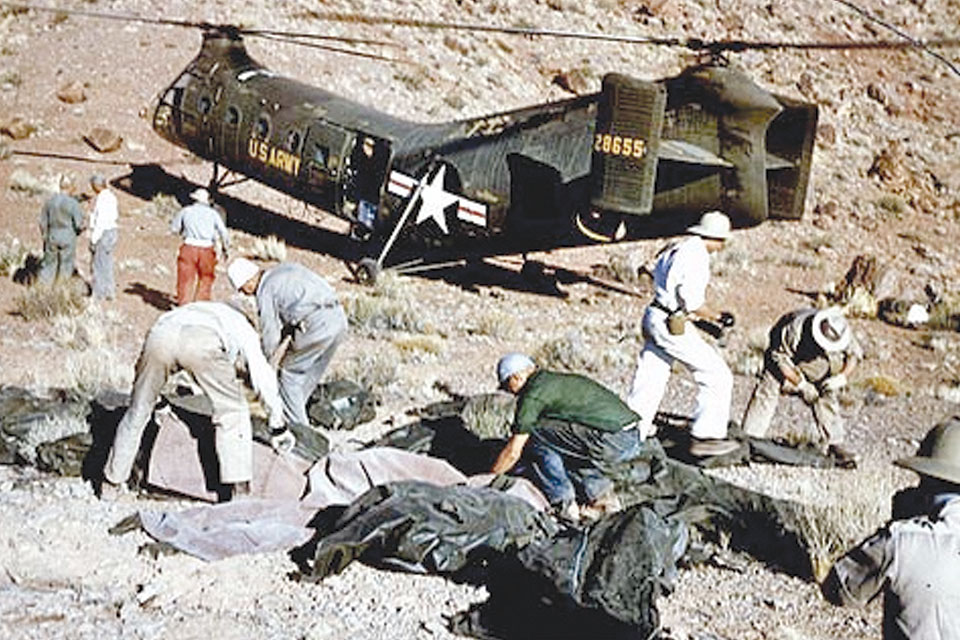
According to the CAA, the two controllers involved, at L.A. Center and Salt Lake Center, had also done nothing wrong. They had discussed the possibility of Flight 2 and Flight 718 coming dangerously close over the Painted Desert, and had agreed to deny Captain Gandy’s request for 21,000 feet. They had also advised Captain Gandy of United 718’s proximity. Though many in the public saw the controllers as negligent, they had actually been following standard CAA operating procedures.
Even the fact that controllers didn’t advise Captain Shirley, flying the faster DC-7, that at his flight plan speed of 288 knots he would likely overtake the slightly slower Constellation was not officially seen as a mistake. Under CAA rules, the controllers were under no obligation to say anything to Flight 718 about Flight 2.
The director of the CAA Office of Air Traffic Control, Charles Carmody, testified at the CAB public hearing that “air traffic control does not provide any control service or function in uncontrolled air space. No responsibility for separation of aircraft outside those areas is accepted.” Both controllers testified that the Constellation and the DC-7 had departed controlled airspace when the planes overflew their last check-in sites: Daggett for Flight 2 and Needles for Flight 718. After that point, the CAA controllers assumed only an advisory role. And given the CAA’s “hands-off” standard, there was nothing unusual about the controllers’ not advising Flight 718 that Flight 2 was nearby.
The CAB report pointed out that once the aircraft left controlled airspace, the responsibility for collision avoidance rested with the flight crews themselves: “During the time an IFR flight is operating in VFR weather conditions, it is the direct responsibility of the pilot to avoid other aircraft.” Thus the CAB report seemed to subtly blame the two pilots for the disaster. For many Americans, however, this was an unsatisfactory conclusion to the investigation.
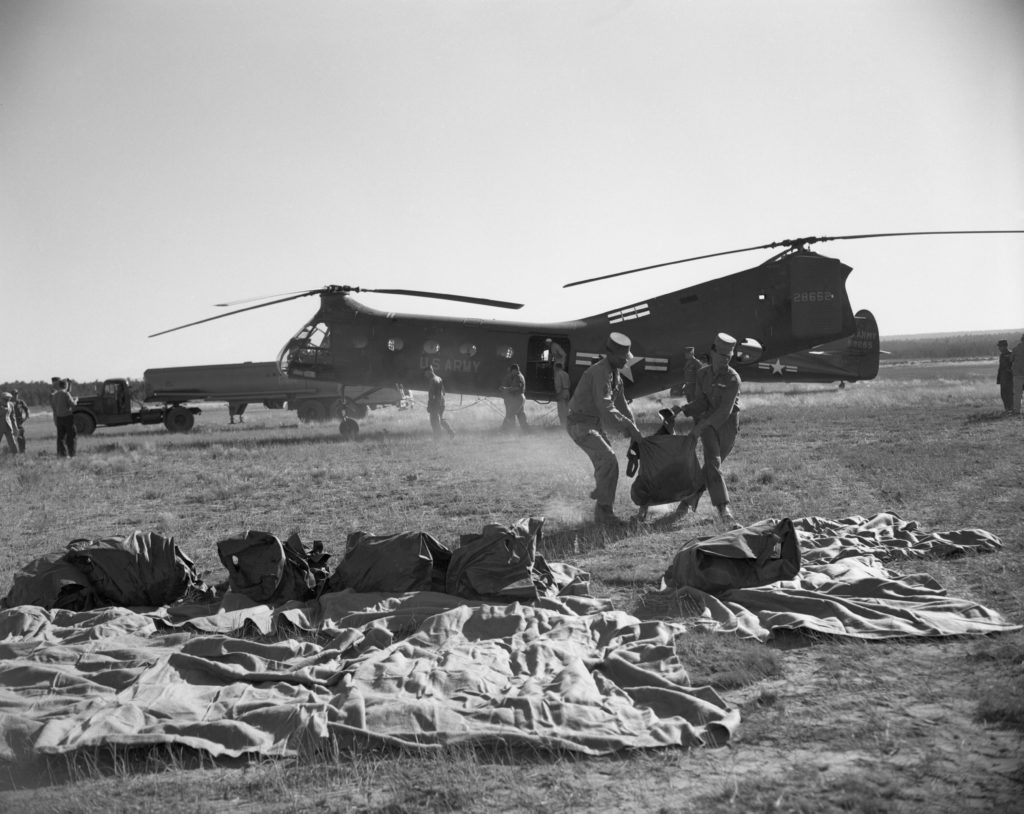
The collision pointed up the fact that America’s air traffic control system was becoming increasingly inadequate in the late 1950s. But taking the system as it then existed and extending its authority to control all aircraft at all times in U.S. airspace was simply not possible. CAA Director Carmody testified that “positive control of all aircraft…would require personnel, facilities and equipment not presently available.”
“The Grand Canyon crash was very important,” says Janet Bednarek, co-author of Dreams of Flight: General Aviation in the United States. “It showed the real limitations of the ‘see and avoid’ rules in the age of the much larger, faster airplanes—and with even faster jet commercial airliners on the horizon.” Congress moved quickly to hold hearings on the accident. A House commerce subcommittee took testimony from a variety of experts, including the CAB’s chief investigator, air traffic controllers and officials of the Air Line Pilots Association. ALPA officials, in particular, blamed both the confusing CAB regulations and small cockpit windows that restricted pilots’ visibility.
But simply enlarging cockpit windows was clearly not the complete answer to increased aviation safety. Many observers already believed that improved regulations and new technology were needed to deal with increasing numbers of flights. Takeoffs and landings at American airports had soared from 5 million per year in 1936 to 65 million by 1956.
End of Uncontrolled Airspace
Even before the Grand Canyon accident there had been pressure to improve air safety in the United States. Four months before the crash, President Dwight D. Eisenhower appointed World War I ace Edward P. Curtis as his special assistant for aviation facilities planning. Curtis headed up a commission that was tasked with designing a better approach to air traffic control.
The Curtis report, delivered to Eisenhower in July 1957, argued for positive control of all high-altitude flights using radar. At the time, however, long-range radar coverage was woefully inadequate: The nation then possessed only one 100-mile radar, located in Washington, D.C.
The report also called for more direct, high-altitude routes. The so-called “Victor Airways” were based on only 375 VOR navigation stations nationwide. As a result, the airways ambled here and there, almost forcing pilots to go “off airways” to fly more direct routes.
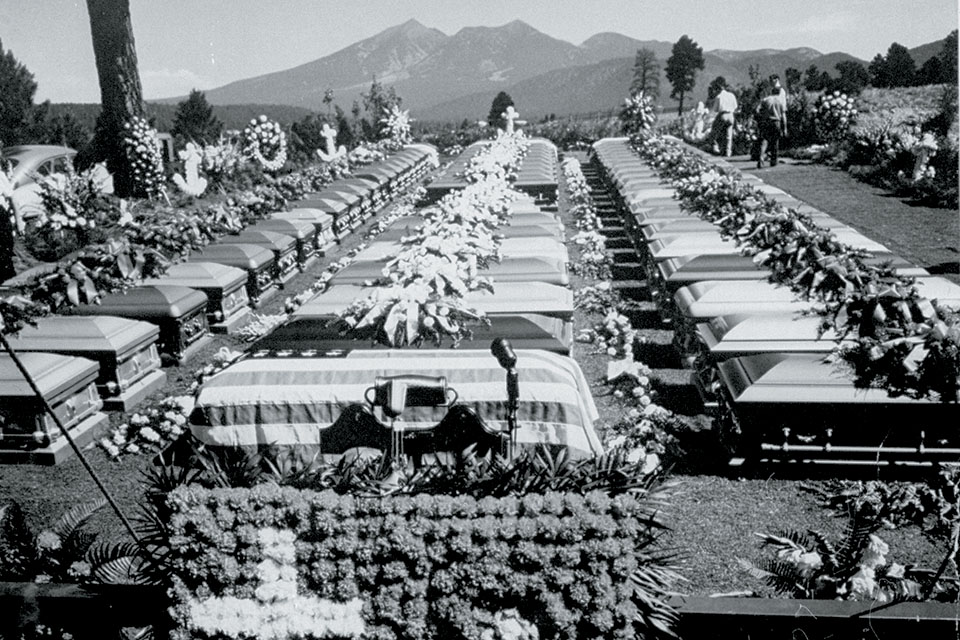
The Curtis report recommendations were simple: No more uncontrolled high-altitude airspace, no more going off airways and no more 1,000 on top VFR flying. In the future, airliners would fly their entire routes under IFR. To implement this positive-control approach, the report proposed applying computers to air traffic control to assist human controllers. Curtis also recommended superseding the Civil Aeronautics Administration and the Civil Aeronautics Board with a new federal aviation agency to streamline air operations, modernize ATC technology and make and enforce safety rules.
Under pressure from the public and the media (the Denver Post, for example, ran an editorial claiming that “The United States is rapidly running out of air—air space for aviation”), Congress acted on the Curtis report. In 1956 a $246 million, five-year plan to modernize air traffic control was approved. The plan included money for more than doubling the number of VOR stations nationwide and adding 82 long-range, high-altitude control radars. In 1958 Congress also finally passed the Federal Aviation Act, creating the Federal Aviation Agency (which would be renamed the Federal Aviation Administration in 1967).
The 1956 accident not only prompted the development and introduction of radar and computers to benefit air travel, it inspired work that began in the late 1950s to develop additional safety technology, including radar transponders, weather radar, anti-collision systems and flight data recorders. It would take years to build and refine those new tools, but the push to introduce them can clearly be traced to two airliners’ deadly detour over the Grand Canyon.
Tim Queeney is a freelance writer and editor of Ocean Navigator magazine, based in Portland, Maine. For additional reading, try: Aviation Disasters: The World’s Major Civil Airliner Crashes Since 1950, by David Gero; and Air Disaster (Vol. 4: The Propeller Era), by MacArthur Job.
This feature originally appeared in the March 2011 issue of Aviation History. Subscribe here!

